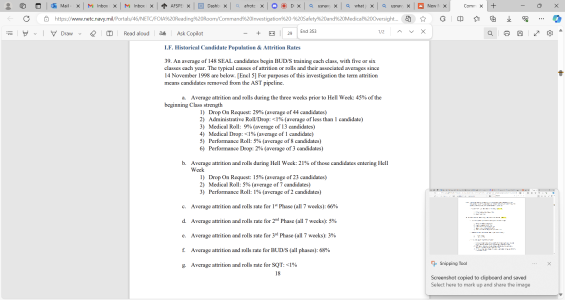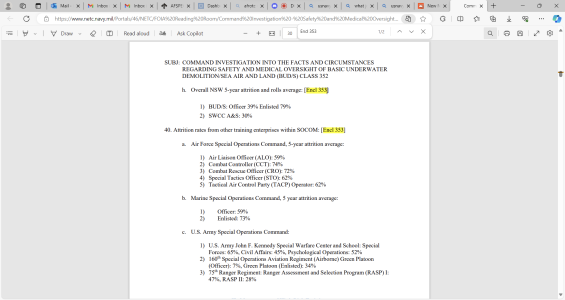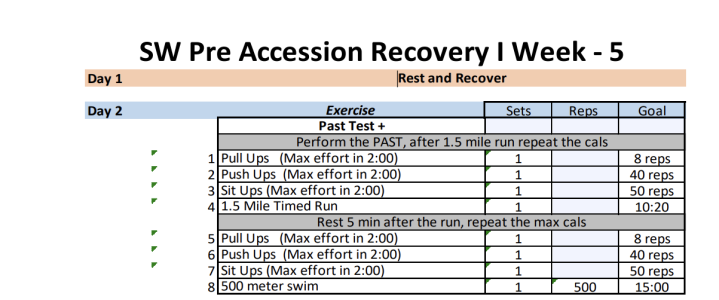I'm familiar with the report however each service gathers it statistics a bit differently. The attrition criteria in the referred to report focusing on Air Force Special Operations Command is the pararescue occupation specialty and the Tactical Air Control Party isn't unique to AFSOC as CCT and SR is.
Further, Air Force training attrition statistics focus on completing the initial skills and qualification training required for award of the apprentice skill level which is the Air Force standard AETC complies with, not AFSOC, for having the skills and abilities to be employed overseas to accomplish missions, whereas AFSOC imposes a 5-level upgrade requirement for CCT, SR, and a AFSOC 5-level upgrade requirement for TACP assigned to AFSOC units.
Due to this, evaluating AFSOC generated attrition rates requires significant awareness of the mission essential technical skills and psychomotor abilities requirements of each AFSC required for assignment to AFSOC units. If you scrutinize a bit closer while there is mention of the Combat Rescue Officer attrition there is absence of the enlisted Pararescue Specialty attrition rate. This can be attributed to when and where in the skill level and mission essential training qualifications the requirement for all in the occupation specialty is required to have advanced qualifications such as military freefall and combat diver.
Further scrutiny of the 9T500 enlistment contract and special warfare assessment and selection is this allows vectoring among the occupation specialties clustered or grouped in the enlisted Special Warfare Career field that is similar to the vectoring done in the Army's Special Forces Branch (18 series MOSs). The last info I have is the 18D Medical Sergeant MOS has the highest attrition. Thus the 18 series Special Forces Branch MOSs provide the better benchmark attrition rate comparison.



